Grantecan, giant canarian telescope
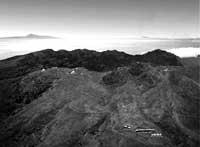
Year 2002. By then the giant telescope of the Canary Islands, known as Grantecan, will begin to work. By size it will be the third in the world, as in Hawaii there are two other bigger ones, while as for the contributions it can make to science, it is expected to be the same. When you start working you will have to find planets outside our galaxy, look for planets like Earth, show emerging stars, investigate black holes and identify other possible galaxies. Many companies in the world are working on this project of international dimension and Canarian origin, among them a Guipuzcoa: Tekniker Technology Centre in Eibar.
Roque de los Muchachos Observatory
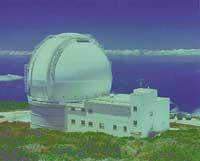
The project of the Grantecan telescope was created by the initiative of the Instituto de Astrofísica de Canarias, a telescope with a main mirror of 10 meters in diameter formed by 36 small mirrors in the form of hexagon. However, when the telescope gets to work, 36 mirrors will move as one, following the model designed by American researcher Jerry Nelson. Despite being big, Grantecan will not feel loneliness. In fact, the giant telescope will be located in the Roque de los Muchachos de Canarias, a place that already has all kinds of telescopes. According to experts, Roque de los Muchachos is the best observatory in the Northern Hemisphere. Thanks to the magnificent location conditions, the most modern technologies to be used in the new project, and its gigantic giant, Grantecan enters the podium of the world's telescopes.
Taking into account its characteristics and location, Grantecan will be able to overcome one of the most frequent inconvenience of telescopes currently existing on Earth: atmospheric disturbances.
Therefore, Grantecan will be able to offer high-quality images. A technical fact is that the degradation of images, at half height, by the effect of the dome, the heat of the main mirror and the optical tooling, will not exceed 0.18 seconds of wide arc. Another challenge of the new telescope is to achieve maximum operational efficiency.
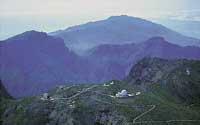
The telescope aims to use the flexible service observation system, so it has chosen to place a single secondary mirror and several focal stations, all controlled by the most advanced technologies, to minimize the number of equipment. The project has a budget of 12,750 million pesetas (503 million pounds), with all equipment, project management and 10% for unforeseen events.
Building for Grantecan
To house the telescope, the building will be collected at the Roque de los Muchachos. The most remarkable feature of the building is the dome, a mobile structure that will house the telescope, the scientific instruments and the necessary tools for maintenance. The dome will be placed on a fixed cylindrical base, surrounding the column of the telescope. This structure is the foundation of the building that will house the telescope.
A selection of two cylindrical or spherical dome models was made for the Grantecan telescope. Finally, the choice of the ball was chosen, especially for three reasons: lower construction cost, better structural layout and less start-up. To reduce the Sun's greenhouse effect, it will be thermally insulated and will have to spend the hours of the day exposed to air conditioning so that it does not have differences with the temperatures of the night hours.
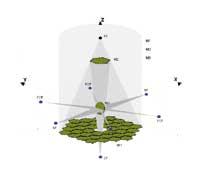
In addition to the air conditioning, during the observation the natural ventilation of the camera of the telescope will be carried out by placing windows in the structure of the dome itself. This will allow to maintain the right conditions inside the building in an economical way, while in low wind situations an artificial ventilation system can be used.
As a ventilation aid, the wind also causes damage to telescopes due to the vibrations it produces. To cope with this problem, the telescope camera will control the wind speed by placing a porous screen in the observation area. This way the observation area will remain fully open when the telescope is in operation, while improving the ventilation of the camera. Another part of the building will be the observation gate, formed by two sliding gates, one over the other. As for the building, it will serve as the base of the dome. The base will be cylindrical, totally fixed and concrete, of about 31 meters of inner diameter and 15 meters of height. Taking advantage of the height they can place a window line at the top of the base, improving the ventilation of the mirror location. Next to the main building and in connection with it will be located another in which services, maintenance, control room, warehouses, etc. will be collected.
Large mirror with many small mirrors
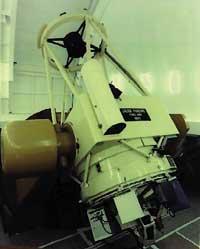
Just as the location and structure of the telescope is important, the optical system has much to do with the ability to capture quality images that Grantecan perceives. The optical system of the telescope will consist of three mirrors: the main one, composed of 36 small mirrors, the secondary and the third. The main mirror will collect the light coming from space; the received can be sent directly from the second mirror to the spotlights and viewed in it or sent to the third mirror so that it can be seen from there. The main mirror will have a diameter of 10 meters and, as it is possible to use the 36 mirrors as one, will also offer the possibility of moving them one by one. The secondary mirror will be much smaller, just over a meter in diameter and, depending on the material with which it is built, it can weigh 45 or 65 kilos. Finally, the third mirror, flat and ellipse.
The entire optical system and scientific instrumentation will be located within another structure known as Grantecan subsystem. The tasks of the subsystem are to keep the telescope properly and keep track of everything that crosses the space. In short, the Grantecan subsystem consists of:
- Telescope structure with inner tube, frame and azimuth ring.
- Bearings to hold and move parts of the telescope structure.
- Encoders for the signal of the axis of the telescope.
- Actuators to operate in the collection of the telescope.
- Mechanical tool rotators and cables to move the telescope.
Tekniker in Grantecanproyecto
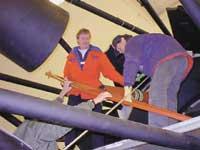
Until 2002, however, Grantecan will not be a reality. At the moment, this is a project that is taking its first steps and in which the Eibar Technology Center, Tekniker, is working in these first steps.
In Eibar we are working on the pre-design of the mechanical tools of the telescope, with the necessary studies to be able to realize the frame and tube of the telescope. The frame, together with the rest of the tools, has the rotating function of the telescope, turning over 360º. The telescope mirrors and the necessary instrumentation for the spotlights are based on the tube.
At Tekniker they must carry out high precision studies. In fact, for the Grantecan project some research has been carried out, since the level of demand, optics and operation has been defined, but without going further. Understanding the optical and operating requirements for any builder is, in two words, the basis of the work being done at Tekniker.
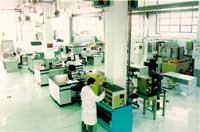
To learn about the operation of the telescope at the time of its commissioning, the eibarrés technology center is performing a simulation model. In this model several systems are grouped: structure, motors, bearings, sensor system... all entering the computer and placing the telescope as if performing an observation function, organizing a theoretical test bench to make a decision or another before building it. Just as the incidences of the instrument of the telescope will be simulated and the consequences of its impact will occur, external factors such as wind, earthquakes, storms, the narrow and unfavorable road leading to the observatory of Roque de los Muchachos, etc.
It's been about two months since they started working at TEKNIKER, and by the time they finish their job there will be another six.
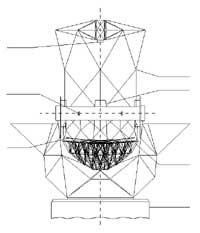
From there, with the conclusions of Tekniker, the telescope mechanics will be launched to the market for builders to make their offers.
For technicians this work is important, although difficult, since for the first time you have to simulate the behavior of a complete structure. In Tekniker something similar has already been done, but always in parts, analyzing the work of a machine tool or improving the dynamics of an engine, for example. Finally, as for the importance of work, it must be borne in mind that Grantecan is a gigantic international project that, with multiple relationships and good work, continues to benefit.
Buletina
Bidali zure helbide elektronikoa eta jaso asteroko buletina zure sarrera-ontzian











